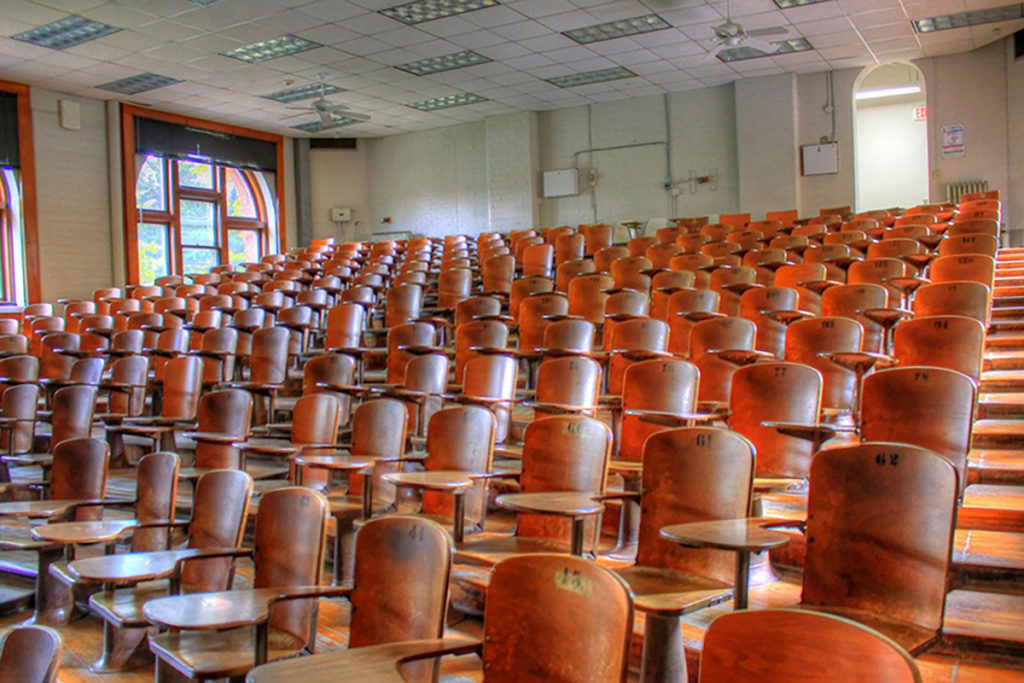This isn’t theoretical
Teaching pandemics in the age of COVID-19, 14 May 2020
Featured in

‘THIS IS THE first time we’ve ever taught the history of pandemics while an actual pandemic is upon us,’ I tell the class, to nervous laughter. We are still at the nervous laughter stage, which will quickly be overtaken by the ‘just nervous’ stage. It’s the end of February, and I’m giving my opening lecture for the medical history unit ‘Plagues, Pox and Pandemics: The History of Death and Disease’. The news about the coronavirus is everywhere, but we are not in lockdown yet. My teaching vocabulary has had unfamiliar terms thrust into it, like ‘Zoom bombing’. The World Health Organization, the new Trump enemy, is on the verge of formally declaring COVID-19 a pandemic. In the first week of the university semester, we are still playing it by ear, reactive rather than proactive.
This unit has run in various forms for nearly twenty years. It attracts a broad range of students from all different corners of the university: cultural studies, engineering, history and medicine. We begin with medicine and health in ancient Egypt, steering students through the classical, medieval and early modern periods before winding up in the twentieth century. For pre-med students, the unit is vital. It’s important that they move beyond the black and white of their textbooks to discovering how we have the medical knowledge we have. Terrible, illegal, monstrous things have happened to obtain modern medical knowledge. Medical students stand on the shoulders of innumerable bodies, many of whom were marginalised by class, race and gender, experimented on before being cast aside. We put the students next to the dismembered bodies of gladiators in the Roman period that Ancient Greek physician and philosopher Galen describes in his groundbreaking – and, to the modern mind, utterly erroneous – works. We guide them through the streets of fourteenth-century Florence as bodies collapse from a mysterious disease that later generations will dub the ‘Black Death’. We show them Spanish conquistador Hernán Cortéz bringing swords and guns and smallpox to native Americans in the sixteenth century, sparking a pandemic that wipes out, in some parts of south and central America, up to 95 per cent of the population. And in a very gothic lecture, we introduce them to nineteenth-century body snatchers and an Aberdeen medical world where students not only have to buy their own books, but their own corpses to dissect as well.
Despite this grisly knowledge, or more likely because of it, the unit has always been popular. Hundreds of students enrol every year, and while lecture attendance does tend to taper off within a few weeks (a consequence of recording live lectures that has impacted all our units), the workshop classes – where students directly engage with the historical material – are always full. The tone is always light, despite what they examine each week: brilliant young minds (for the most part) enjoy the cut and thrust of historical subjectivity and debate.
THIS YEAR, THE tone is different. A significant number of students drop out of the unit. As social distancing and quarantining guidelines are revised and updated by the day, sometimes by the hour, so too are our teaching arrangements. Face-to-face classes are made non-compulsory. We start learning how to use Zoom and Microsoft Teams. Student numbers on campus dwindle. People isolate before being told they need to. Our final face-to-face class in early March focuses on an outbreak of weaponised anthrax at Sverdlovsk in the Soviet Union in 1979. Conspiracy theories about COVID-19 have already started to circulate, and the students glance at each other and ask if history is repeating itself.
The personal starts to creep into their work. I’ve always marked assignments containing bad spelling, poor grammar, dodgy research. I’ve never been confronted by fear.
You often encounter the past without emotion. There is the interest in the stories, the narratives of those who have come before us, the great events and the people who lived through them. Sometimes you engage with historical material that makes you flinch, but it rarely hits you with the notion that this is happening to all of us right now.
As long as I have been teaching this unit, we have spent a week looking at the Spanish flu, with a worksheet for students to fill in. And as long as we have had that worksheet, the final question has always been ‘What are the implications for the possible social impacts and our responses to a major influenza if it occurred today?’ In previous years, the answers have been brief, regurgitating the reading material. This year, the students just have to look around. One young woman writes of her experience living in the residential colleges, unable to return home to see her family, enduring long periods of isolation in her room. Another writes about working in a pharmacy and worrying that the measures they’re taking to keep customers at a safe distance from each other will not work. Most of the time, in most years, I urge students not to bring too much of the personal into their work. ‘Critical distance is important,’ I used to say.
I cannot say that now. We are used to holding the vastness of history at arm’s length, indulging in the magical thinking of that was the past. We cannot do that now.
AS WE APPROACH the end of semester, we are talking about lifting our own restrictions in the same breath as we are teaching about the second wave of the Spanish flu.
I open my emails to find a message from a student complaining about an assignment mark. I had given him 85 per cent, a high distinction. He believes he deserves a better high distinction. I have received emails like this a thousand times or more over the past decade of teaching. I usually respond to them with irritation – but this time, I just smile.
There are still threads of normality all around us. For the moment, they are just a little harder to see.
14 May 2020
Share article
About the author

Andrew Broertjes
Dr Andrew Broertjes teaches history at the University of Western Australia. He has previously written for The Australian, the Australian Book Review and the...